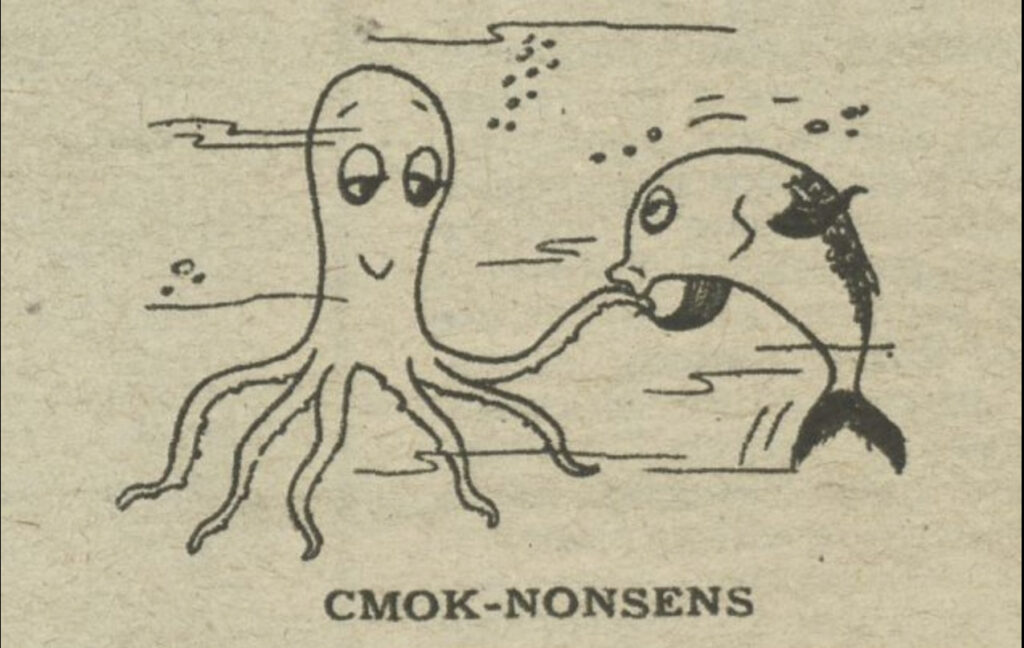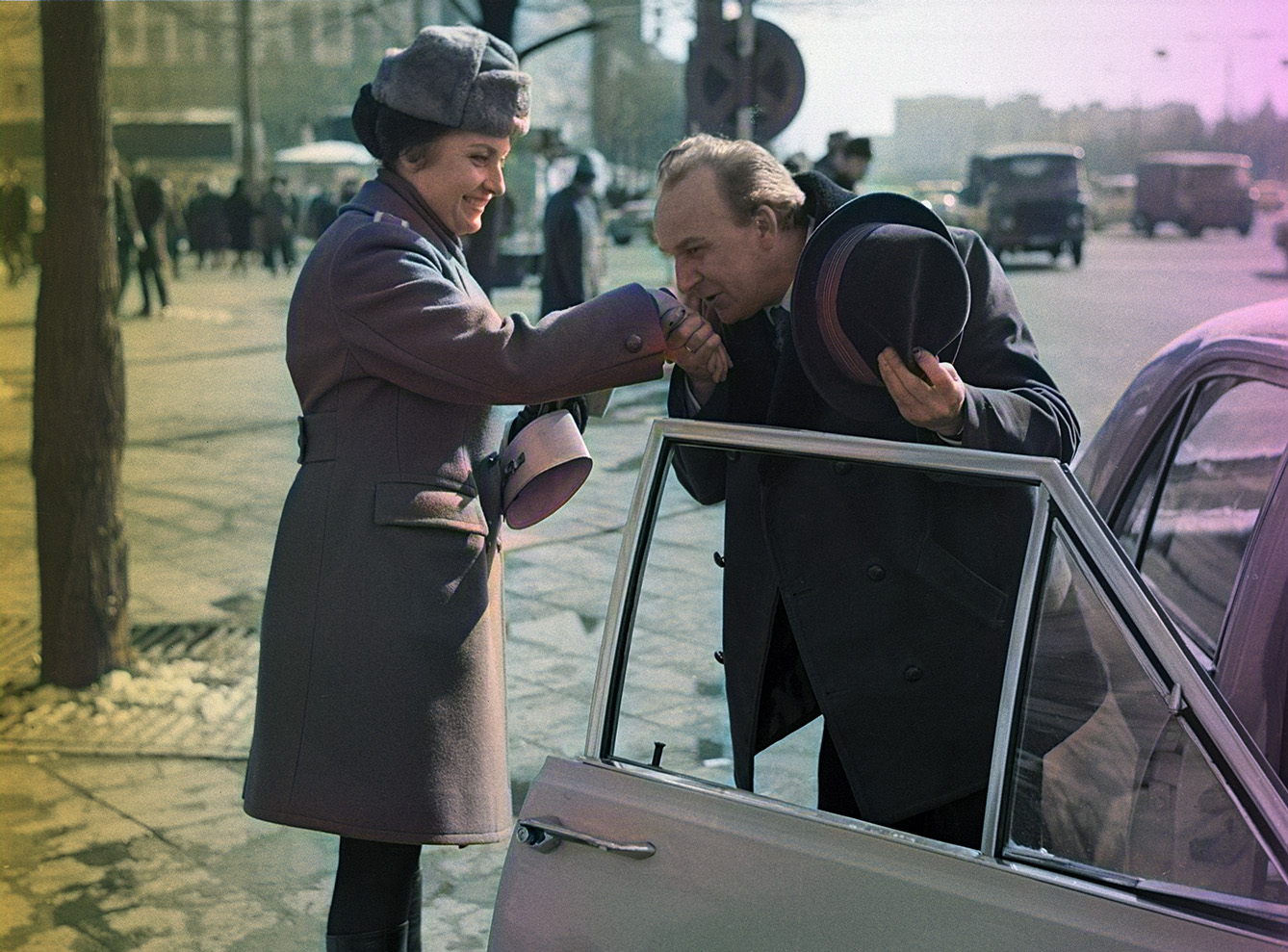Yup, you read that right. In 21st century Poland, it is still an (albeit dying) custom for old-fashioned men to kiss the top of the hand of an unrelated, or even basically unknown, woman. For the proponents of the habit, it is a form of chivalry, a gentleman-like behavior, and a form of honoring the so-called weaker sex. Female MPs of the new generation found it uncomfortable, even offensive, and assumed the rest of the society felt the same.
This form of greeting is no new invention. It was in use for decades, perhaps centuries. Known for his sharp eye for unusual situations, famous photographer Elliott Erwitt documented a man kissing a woman’s hand in Cracow’s main square on a trip to Poland in the sixties. But this Polish custom struck him as peculiar for a reason. There was already a full-blown crusade against it even back then.
Hand kissing in Poland: declared “kiss-nonsense”
The most important cultural and lifestyle magazine of the communist era, “Przekrój Weekly,” went to war with the issue in the forties and fifties. “Cmok-nonsens” ( Eng.: Kiss-nonsense), as the movement was christened, was condemned in a series of articles targeted to eradicate the custom from society. In 1947, “Przekrój,” in their satirical style, declared hand-kissing passé – it was an unhygienic, disgusting, empty gesture, especially because men were not discriminating regarding the women they would kiss.
The third charge was that hand-kissing could lead to kisses on different parts of the body and, as such, lead to wanton decisions, putting question marks on a person’s relationship status. To that, the author concluded, hand-kissing was generally nonsensical. Contrary to the new, post-war, socialist, and democratic “savoir-vivre,” “cmok-nonsens” remained one of the old-style customs that needed to be abandoned for Polish society to become truly modern.
“Przekrój”: magazine teaching socialist etiquette
That said, the idea was not all that democratic, as the very same “Przekrój” advised readers to reserve kisses on the forehead for “children and servants.” At the same time, anything more passionate than a kiss on the lips was declared entirely inappropriate.

But the struggle has been long. Elliott Erwitt’s now-famous shot was taken in 1964, seventeen years after the “Przekrój” campaign against hand-kissing. To this day, modern etiquette guides typically rail against the custom. However, as the legislative work from recent years shows, the habit is still strong with Polish men – or at the very least, Polish men of a certain age. Our advice for tourists here: skip this tradition of kissing woman’s hand if you want to stay in the good graces of Polish women – and women in general.
Also read the news about Poland.







